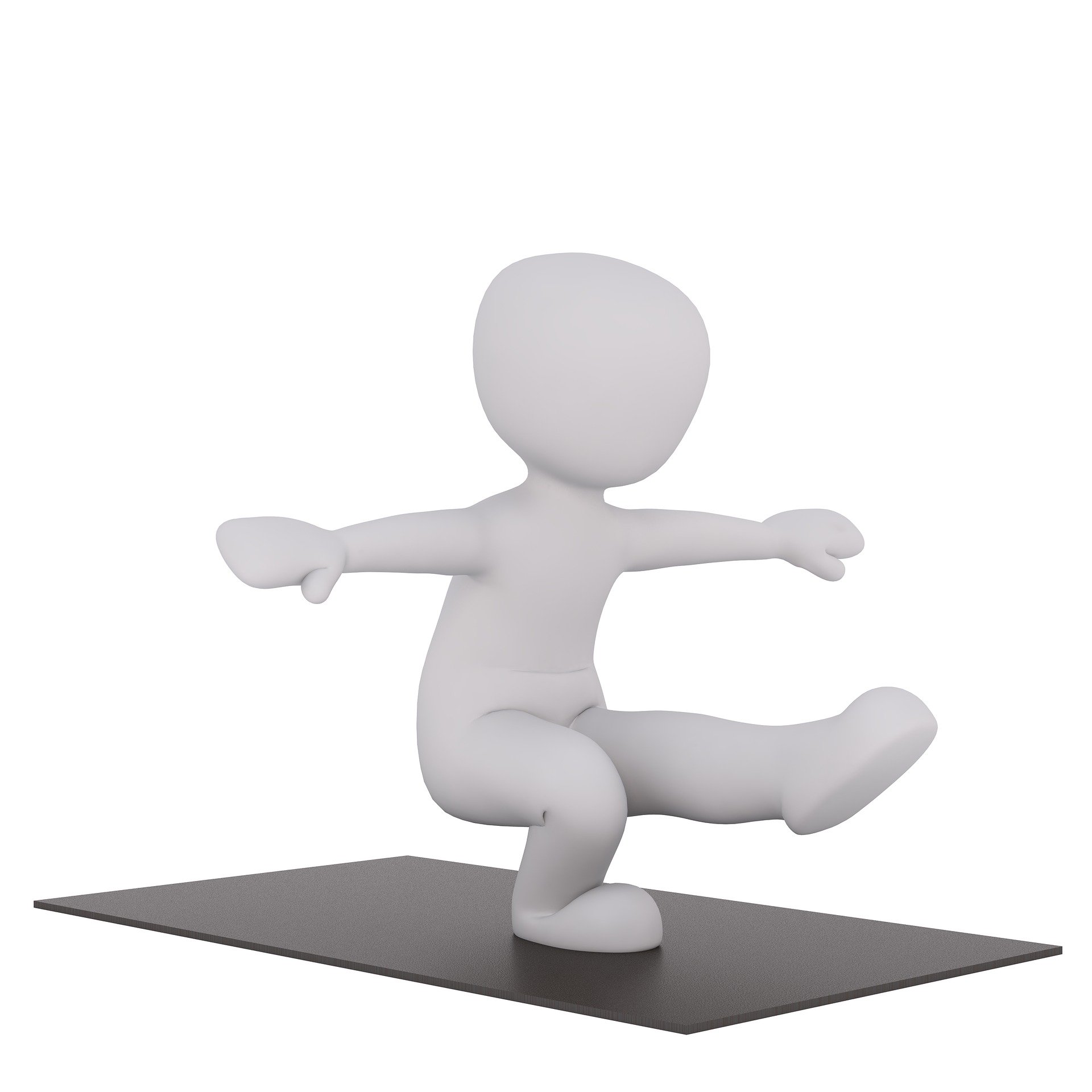The good news is that exercise adds up. You can add little bits of exercise to your day and get the same health benefits as you would going to the gym for a solid stretch of time.
Now, these short sub-maximal “desk workouts” wont make you the next Wolverine. But, they can help improve posture, reduce sitting time and increase mobility and strength. All of that can help reduce your risk for heart disease, high blood pressure, falls and injuries.
So, let’s get into a few simple exercises to add to your day. Do a few of these each day, pick your favorites or the ones you need the most. Shoot for a few minutes each hour. If you sit for long periods of time, set a timer to remind you to stand up. Even the simple act of standing helps mitigate sitting.
Exercises while sitting:
I know I just said to stand as much as possible, but let’s look at things you can do in your chair for when you’re forced to be there.
Under the desk toe-taps
While at your desk, tap your toes at different heights. Walk your feet up the wall or onto a garbage can. Think about straightening at the knee first, to engage the front of the leg. This may stretch the back of your leg as well. Focus on pointing your toes to engage your calf muscles.
If flexibility prevents you from getting your leg all the way straight, go as straight as you can, then focus on engaging the lower ab region to lift the leg without bending more at the knee. Technically, you’re working your hip flexors at this point.
Knee-to Chest
Alternate bringing knees as far to your chest as you can. Leaving one foot on the floor, lift the other leg, bending at the knee and bring it to your chest. See how far you can go before needing to use your hands. Once you need your hands, pull your knee into your chest and get a bit of a stretch.
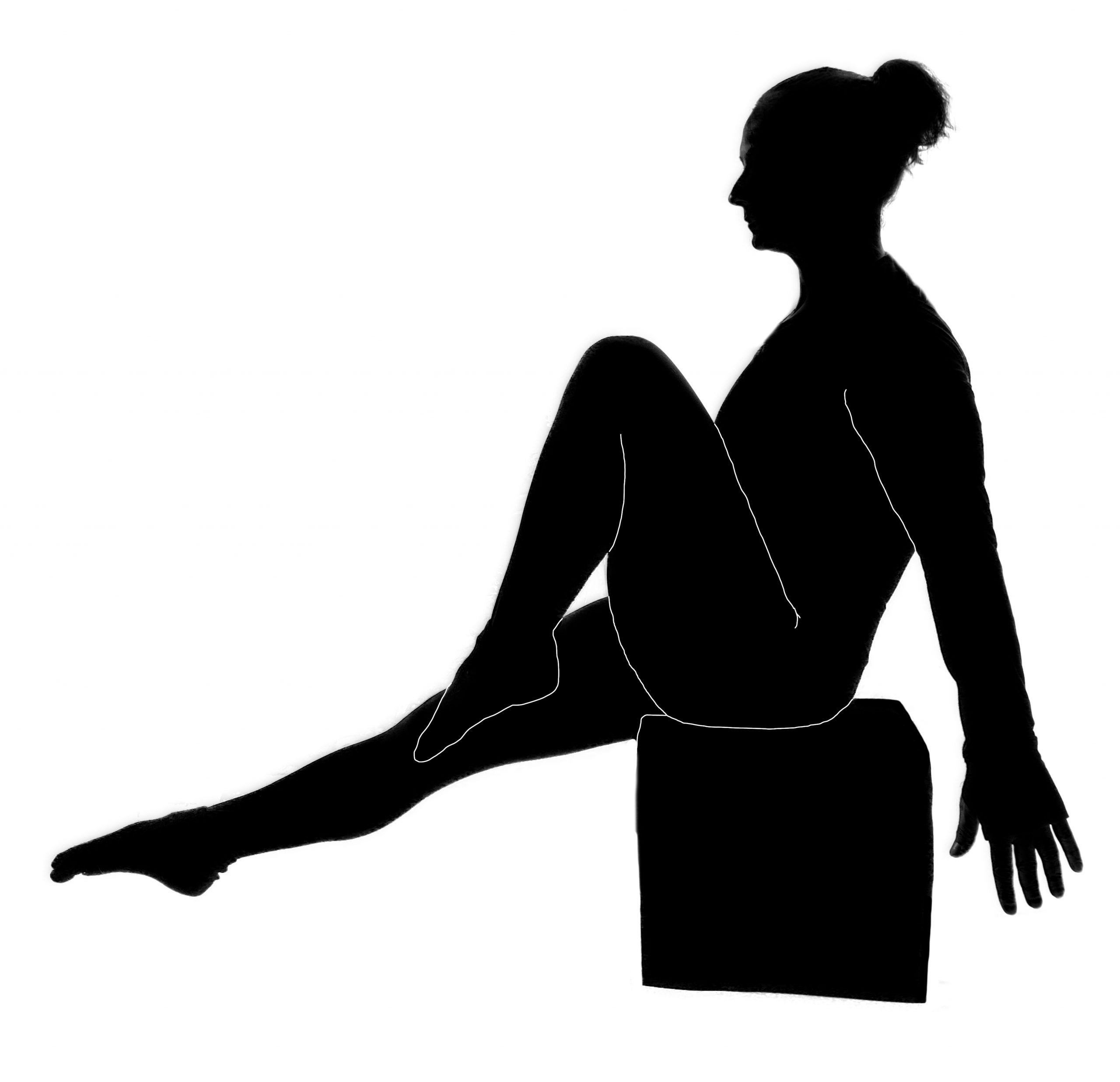
Opposite Toe Touch
While seated, extend your left leg, and reach for it with your right arm. See if you can lift the leg toward your hand, rather than bending to get to it. Practice sitting up straight and not hunching over to get to your toe. It’s ok if you don’t actually reach your toe. Focus on rotating slightly at the shoulders and lifting that foot.
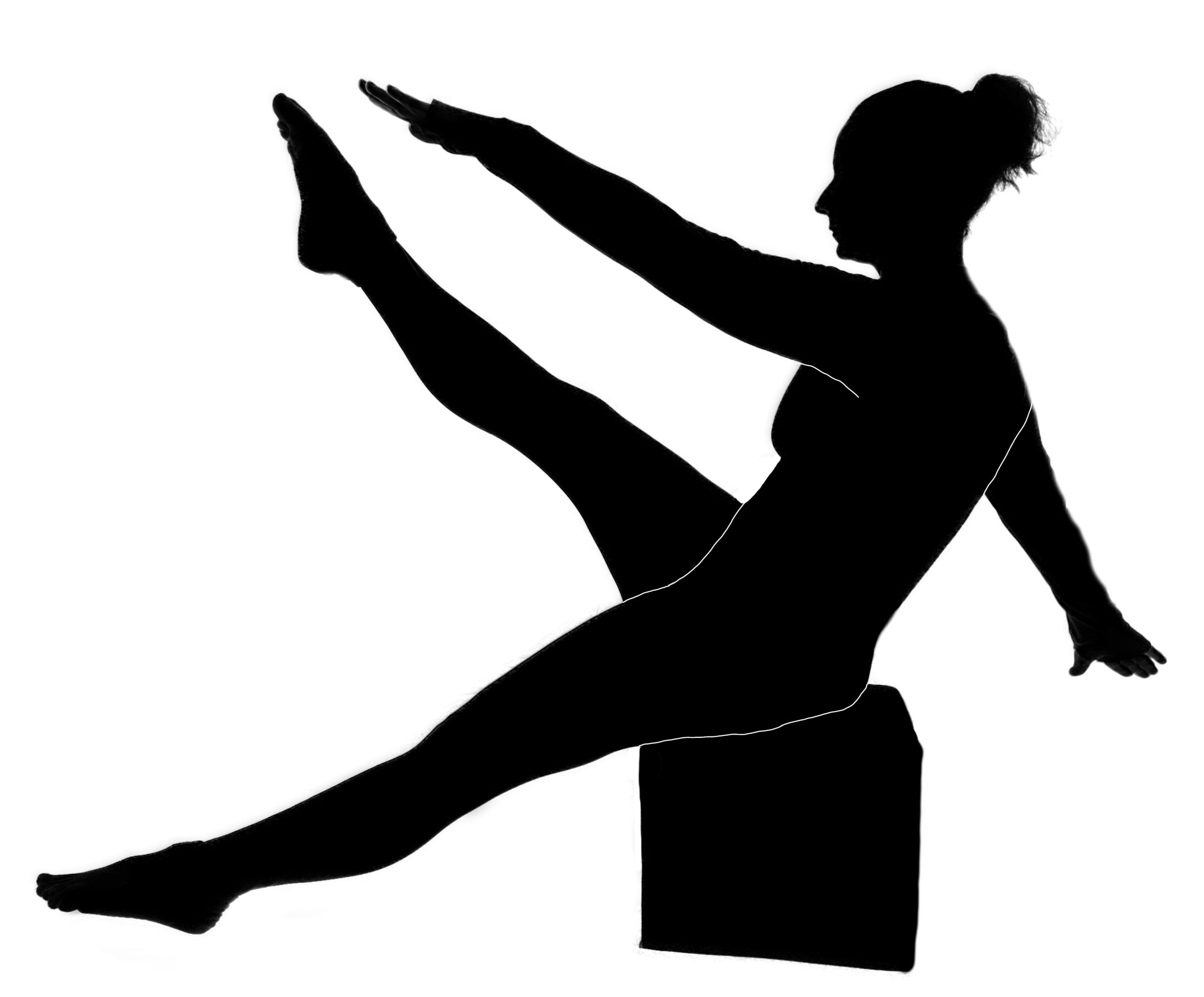
Stability Ball
Sit on a stability ball. If you can swing it, get a stability ball to sit on instead of a desk chair. This will force you to use more internal muscles in your core to prevent you from falling over. Just remember, while it rolls, it will tip you over if you try to roll backwards on it. (Speaking from experience.)
Chair “Races”
Ok, probably not a great idea to actually race in your office chair. BUT when you do “need” to move in your chair, use your feet to push or pull you away, concentrating on the muscles needed to do the work. Despite my name for it, take it slowly and use muscle, not momentum to get where you need to go.
As you push your chair backward, you should be using the front of your leg (quads) to extend your foot at the knee. Because the foot stays planted, the chair rolls backward. As you pull your chair forward, you’ll be contracting the back of the leg (hamstrings) to bend the knee.
Use one leg at a time. Try to get the same number of reps on each side. Note if it’s harder to push or pull. Favor the harder one, do it more. This will be more difficult on carpet. But, I was told once by a coworker that he was told to do this for knee rehab.
Push-Pull Chair
While seated, use your arms ONLY to push or pull your chair away from or toward your desk. Grasp your desk edge firmly and lift your feet off the ground. Pull yourself toward the desk. Then repeat by pushing away from the desk. If you’re on the phone a lot, you can do this while talking
Posture Awareness
Once an hour or so, focus on your posture. Roll your shoulders back and down, slightly lift your chest. (If you don’t know where back and down is for your shoulders, start by pinching them together behind you. Imagine pinching a pencil between them. Hold that for 10-30 seconds. Note that this isn’t where you should be for good posture, but it should wake up those muscles in your back that don’t get to work when you slouch.)
Try to find neutral posture in your pelvis. Think of your pelvis as a bowl when it is neutral, you aren’t spilling soup out of your bowl at all. If you tilt it forward, you spill soup to the front, if you tilt it backward you spill soup to the back. Just like during lunch, you don’t want to be spilling soup.
How can you tell if your spilling soup? This could take a much longer post, but in general, as your seated, you should be able to feel the two bones at the base of your pelvis. They are known as your sits bones. They should point down. You should not be rocking back onto your tailbone, or forward off those bones.
When standing, you will have a pronounced curve in your lower back and your belly may hang out more if you have a forward tilt. And if you have a backward tilt, you may find that you have no curve in your lower back, and your butt may be disappearing.
Hold good posture 5-10 minutes while sitting every hour.
L-sit on your chair
You can do this one if your chair has arm rests. Also. If you have the strength to do it without pushing with your feet. You don’t want to try it with your feet on the ground, and end up pushing your chair away from you while you’re partially suspended.
Place both hands on the arm rests. Lift your feet off the floor and press down with your arms to hold your butt off the chair. Hold 10-30 seconds. SLOWLY lower down. Skip it if it bothers your wrists.
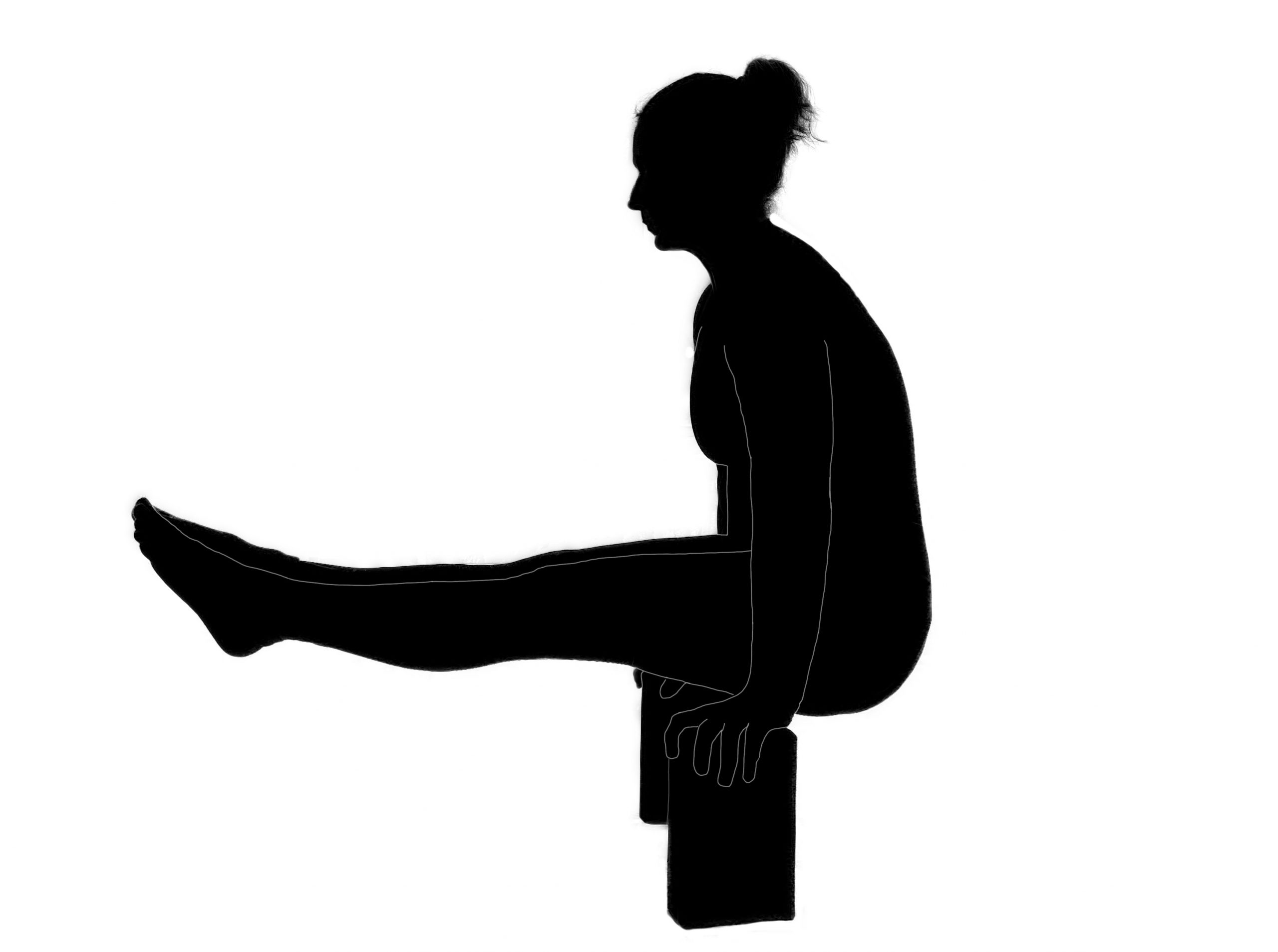
Standing Exercises
Just swapping standing instead of sitting for 2 hours a day can equate to 6-7 pounds of weight in a year. Let’s do some quick math. If you sit for about 6.5 hours of your 8 hour day at work, try standing every 30 min for 5 min only. That adds 65 min of standing to your day (and subtracts it from sitting.) Then you only need to find 55 more minutes in your day to stand when you would otherwise sit. If you commute to work on a train, you could potentially stand for a portion of that ride. And when you get home, if you sit to watch TV you could potentially stand for some of that.
Do you have regular meetings with colleagues? Could you make these stand-up meetings? Stand-up meetings help focus people on the agenda and reduce the tendency to wander off topic. So, they are beneficial for your waistline and your timeline.
There are many combinations to get more standing in. Use your imagination. Add comments below for your tricks to stand more. And, while you’re standing, here are some exercises to do to add to the caloric burn.
Single Leg Calf Raises
Stand with all your weight on one foot, raise up on to your toes. Be mindful of your balance. Also pay attention to where your weight is on your foot. You want it spread out evenly across the toes. Your ankle shouldn’t roll in or out either. Take it slow (both lifting and lowering) and shoot for 10 reps each side.
Hammy Squeezes
While standing, put all your weight on one foot, and lift the other foot to your butt bending at the knee. See how far you can lift it. Don’t use your hands. Ideally, you’d be able to lift it all the way up. However, we tend to forget how to use our legs when we sit for long periods of time. Do 10 slow reps on each leg. Be mindful of balance and hold onto something if needed.
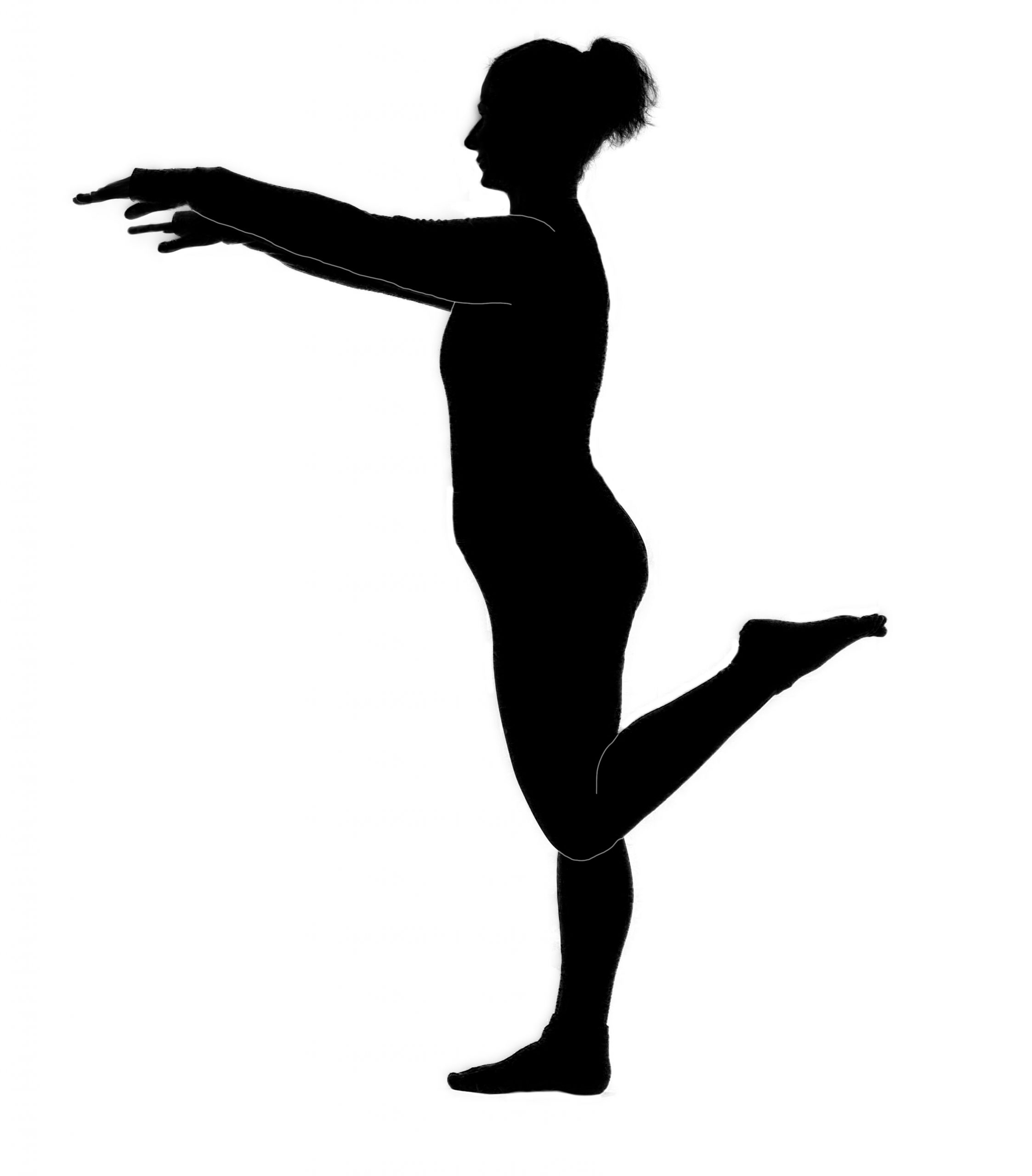
Lunges
Some folks have no issue doing obvious exercises at work. If this is you, add lunges. Step out with one leg, bend both knees keeping your torso upright and try to touch the back knee to the ground (don’t actually touch, especially if it’s dirty).
Need to be more discreet? Drop something, and lunge to pick it up.
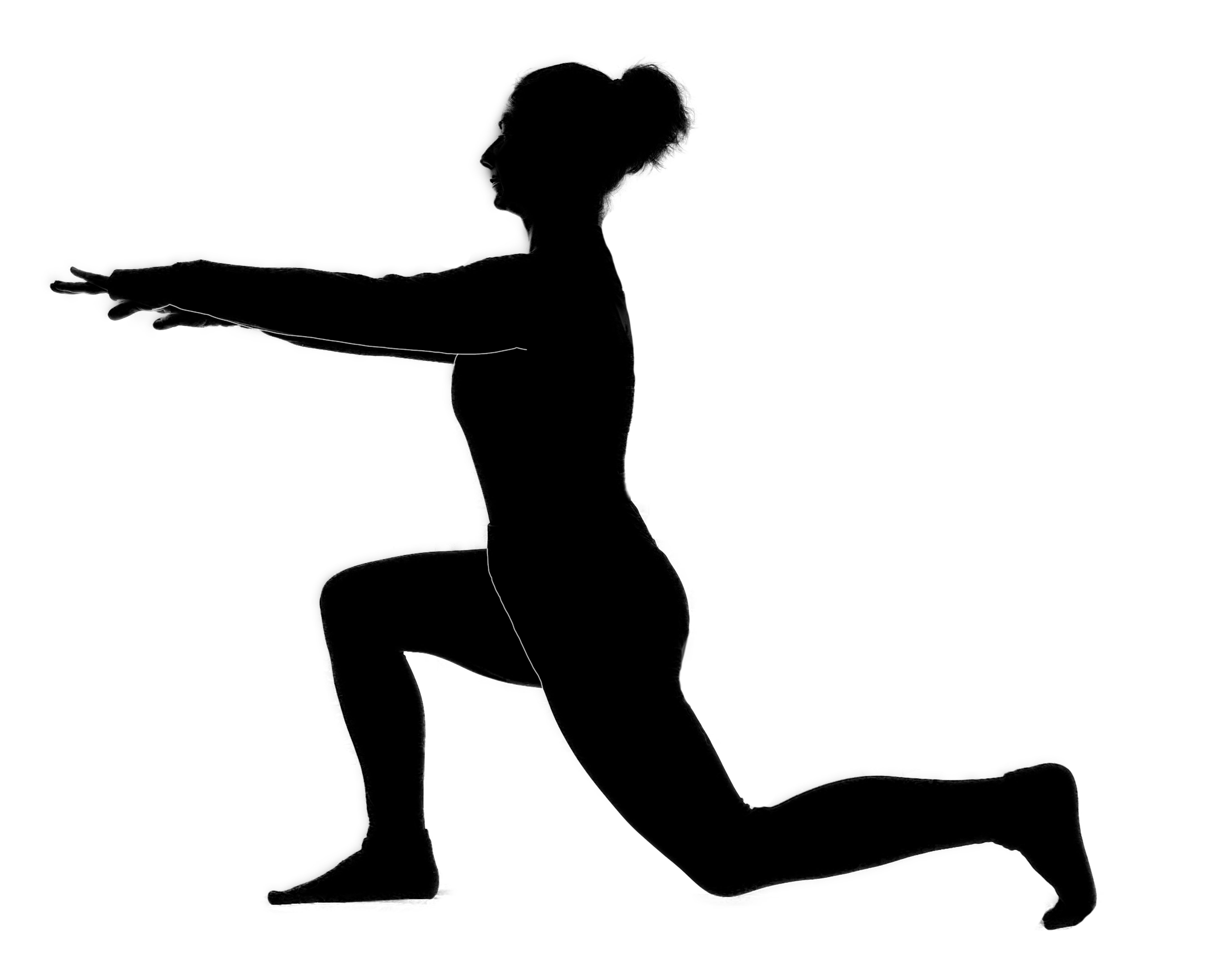
Single leg deadlifts/Drinking Bird
Stand on one leg. Reach for the floor with the opposite hand as you’re standing on. Use the same hand to reach out in front of you for balance. And keep the non-standing leg and torso in a straight line. This is much like how you see golfers pick the ball out of the hole. I like to use this to pick things off the floor with. The catch is to make sure you use both sides of your body equally. You may find balance and stability is much better on one side than the other. And this is normal.
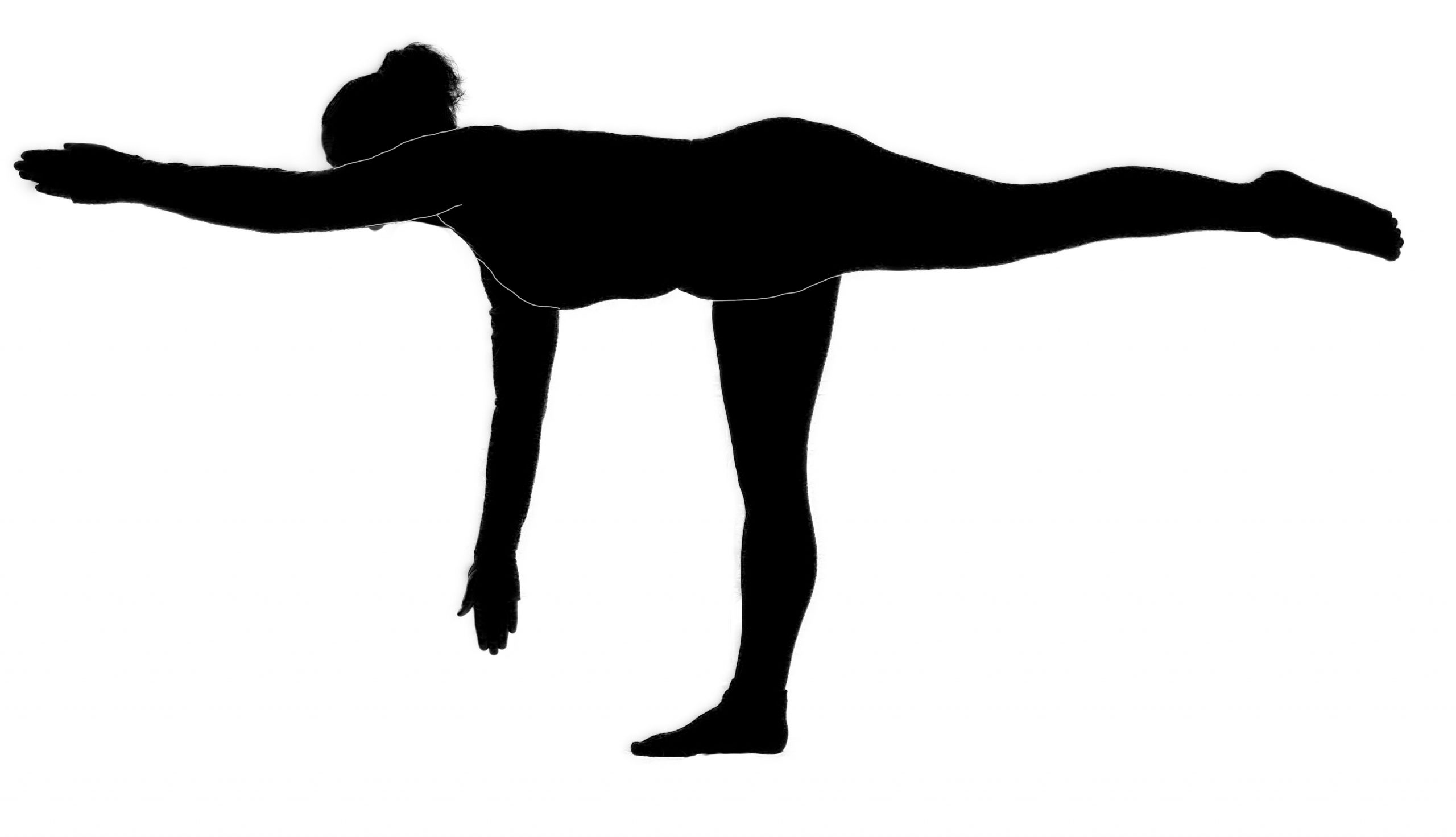
Pushups
Yeah, I know this is in the standing section. So, say you’re standing, you can do this facing a wall or maybe a desk or credenza. Place your palms out on the wall, walk your feet a little away, and bend your arms to bring your face to the wall. Keep the elbows into your side. Then, push yourself away from the wall.
Use a lower surface like a desk to make it more difficult. Countertops are a nice height and frequently available when you’re waiting for coffee or a copier.
Wall-sit
Yeah, again. Standing… I mean, you start standing, so you have to get out of your chair for this one. Place your back against a wall, or immovable structure, and lower your tush down so your thighs are parallel to the floor, or your knees make aright angle. Hold for a while. This will be more difficult on a more slippery surface such as a smooth book case or window. It’ll be easier on a rough grippy wall.
Squat
Oh, the good ol’ squat. Keeping feet about hip distance apart, lower your butt down. Keep your upper body as upright as possible, bending at the knees and hips. Go as low as you can without bending forward or ripping your pants. Do slow reps and focus on movement quality. Plus you don’t want to be doing all high-intensity sweaty squats in your suit.
Side-to-side Lunge
Make your feet slightly further apart. Alternately bend your knees. Your body will move from side to side as your weight shifts to the bent knee. Keep your upper body upright and only go as low as your flexibility, pants and strength will allow. You can do this slowly or a little faster if you want more of a heartrate bump.
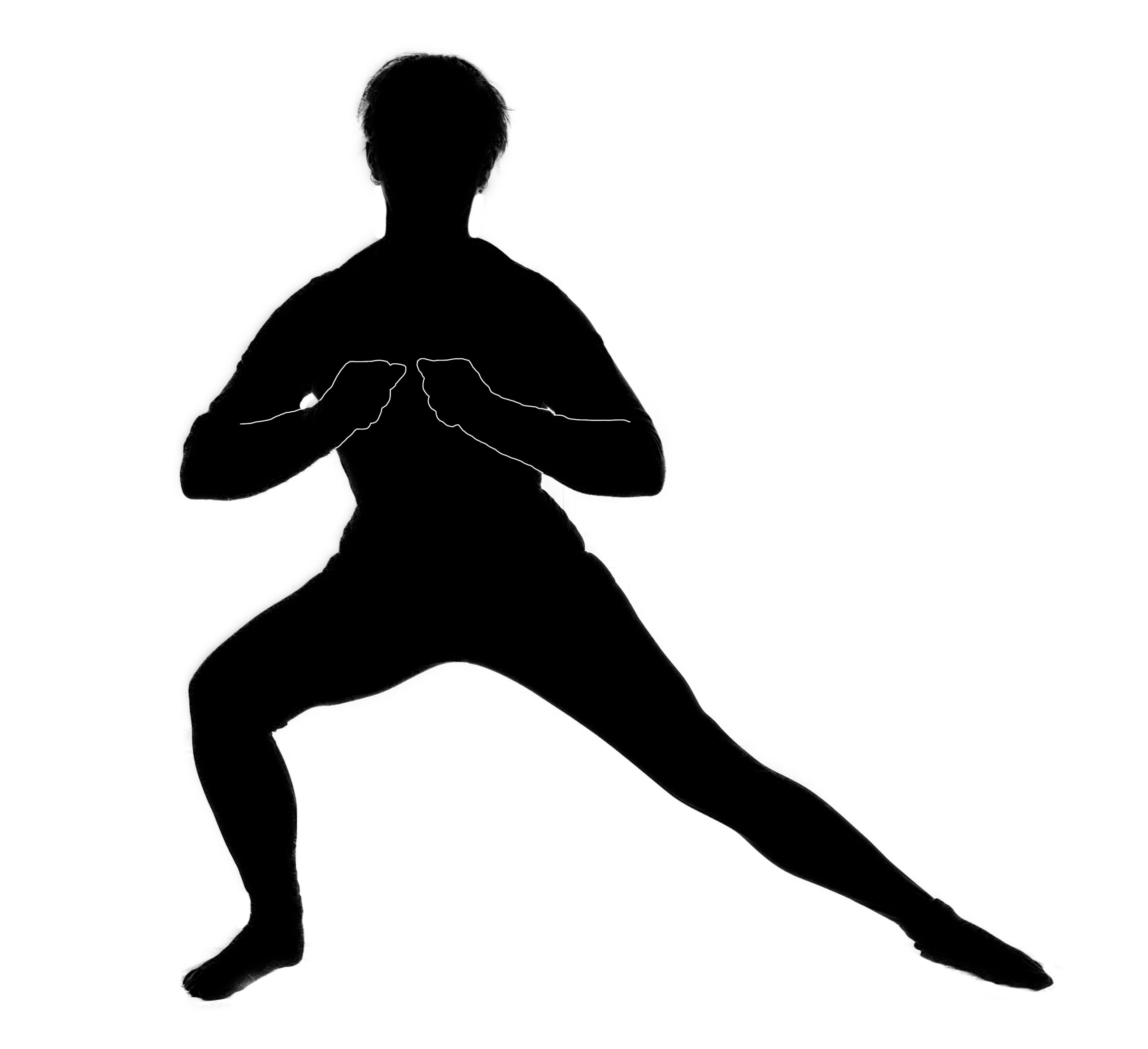
Plank On the Wall
So, if you’re chatting with a coworker in the hall, and feel the need to lean, turn it into a plank. Place your hand, or elbow against the wall, with your feet out a little way and hold that position with a straight body. Don’t et your hips fall toward the wall. Make sure you get in both sides.
Shoulder Blade pushups
Place your hands against the wall like you’re going to do a pushup. But, keep your elbows straight and just let your shoulder blades slide together. Then pull them apart by pushing into the wall. If you struggle doing this without bending your elbows, then rest on your elbows to take them out of the equation. These are good for upper back mobility, which is something we can lose over time from sitting/slouching. It will help you get better posture.
Door Push/Pulls
This one requires standing, but also movement. If you have heavy doors you need to move through, concentrate on opening them using only upper body muscles and no momentum. Typically, if we have to pull a door open, we step back with one foot while pulling on the door. Instead, try planting your feet and see if you and use JUST your upper back and biceps to pull that door open.
Likewise, if you have a push-to-open door, use just your arms to push the door. Think of this as a push-up but where the door moves and your body doesn’t.
Do-Anywhere Exercises.
So, these exercises don’t really require sitting or standing specifically. So you can add them in during meetings, or while you’re standing and waiting for the printer.
Isometric Glute Squeezes.
Find your glutes. That’s the butt muscle. Squeeze and hold. Think of clenching like… well, like you have a $100 bill in there and someone is trying to pull it out and you’re not going to let them. You can also alternate sides. For a bit of variety, but you won’t be able to keep the $100. The more you’ve been sitting, the harder it might be to find this muscle. Keep thinking about it, eventually you’ll get there.
Isometric Chest Press
Placing palms together in front of you (like prayer position or Namaste). Use your chest muscles to press your palms together. Squeezing tightly. Hold for 10-30 seconds and release.
Isometric Back Squeeze
This one works your upper back. It’s important to focus on your upper back if you sit and lot and especially if you slouch. Clasp your hands in front of you and try to pull them apart with your back. Think about bringing those shoulder blades together and your elbows back. Hold for 10-30 seconds. Switch which hand was on top.
So, there’s 23 exercises (25 if you count the push/pull exercises as 2 each) that you can do at work either seated or standing and waiting. Aim to add some of these into your day every hour. Pick a few to try. Make a log and hold yourself accountable.
Leave a comment below if you have your favorite exercises to do at work.
If you want more ideas on getting additional movement into your day, check out this article. And if you need additional stretches to go with your exercises, take a peek at this list of stretches to do while at work.

